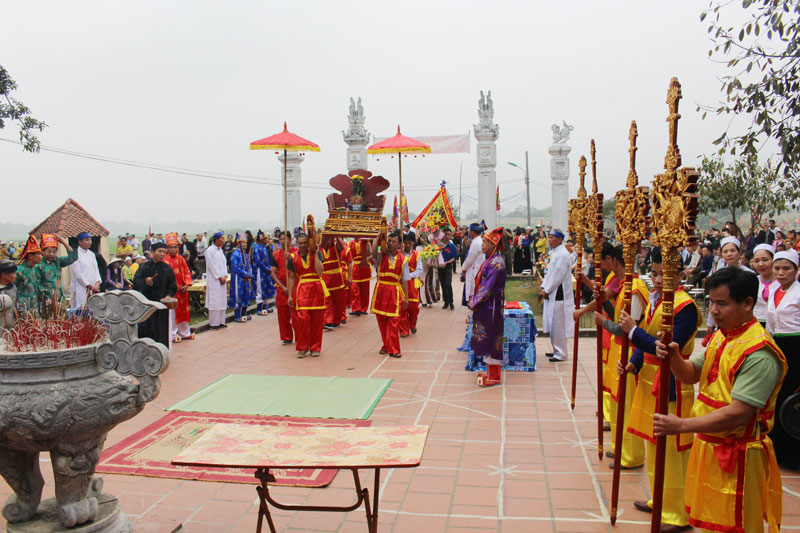
(HBO)- The Dinh Ngoi (Ngoi Communal House) festival 2019 kicked off in Su Ngoi commune of Hoa Binh city on February 13 (the 9th day of the first lunar month of the Year of Pig 2019).

The rite of Via Lua (Rice God) procession to the Ngoi
Communal House in the opening day of the festival
The festival annually takes place on the 8th-9thdays of thefirst lunar month to commemorate the gods of the village, who contributed
to building, preserving and protecting the country and the homeland. It also
aims to pray for a peaceful and happy new year, good harvests, and health for villagers.
The festival includes the procession of Via Nuoc (Water God) and Via Lua (Rice
God), worshipping, incense and alcohol offering in the communal house.
The festive activities include art exchanges, Muong gong performances, display
of Muong people’s foods, traditional sports competitions and folk games.
The festival contributes to maintaining and preserving
cultural and historical values of the locality. It also offers a chance for
locals to educate their traditions for young generations, as well as promote Hoa
Binh’s beliefs to visitors./.
The People’s Committee of Lac Son district held a ceremony on April 28 to receive the provincial relic certificate for the ancient rock carving site at Suoi Co stream, located in My Thanh commune.
A special music show titled "The country is in the fullness of joy” has been held at Hoa Binh Square in Hoa Binh city in celebration of the 50th anniversary of the liberation of the South and national reunification (April 30, 1975–2025).
The People's Committee of Lo Son commune, Tan Lac district, has organised the local annual traditional stream fishing festival on April 19 - 20.
As a land deeply intertwined with human history and Vietnam’s millennia-long journey of nation-building and defence, Hoa Binh is often revered for its epic tales and legends.
Residents of Hoa Binh boast a rich cultural identity, reflected in their unique language, traditional attire, customs, and folk melodies – described as "sweet as honey, clear as a mountain stream.”
Lac Son district’s Vu ban town held the 2025 Truong Kha temple festival on April 12–13 (the 15th–16th days of the third lunar month). Since its revival in 2019, the festival has been organised every three years, preserving valuable intangible heritage while meeting the community’s cultural and spiritual needs.



